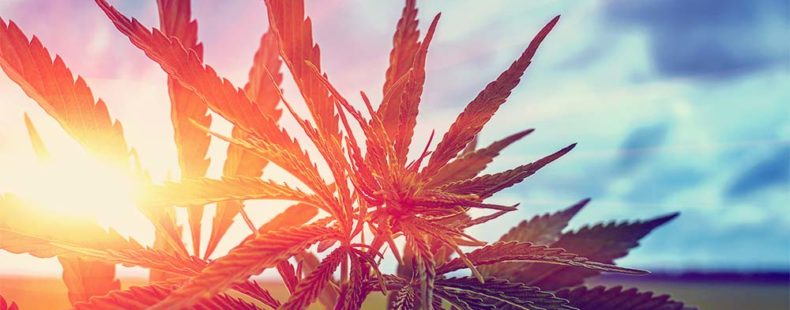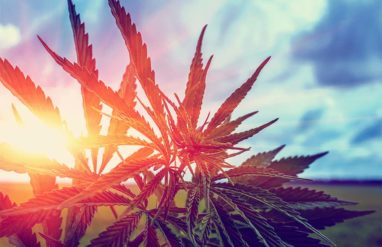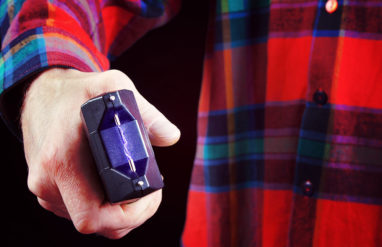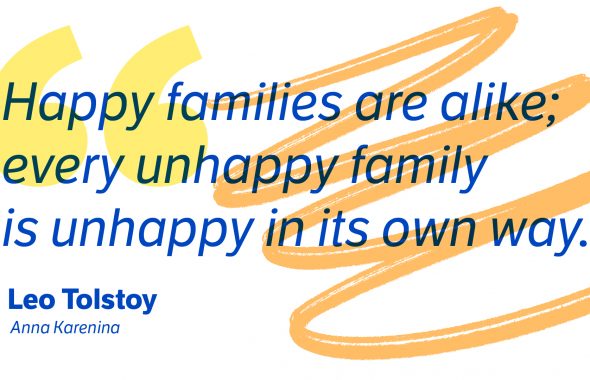“One toke over the line . . .”
That 1971 hit by the duo Brewer and Shipley was written as a paean to marijuana. On Last.fm, Tom Shipley commented, “‘When we wrote ‘One Toke Over the Line,’ I think we were one toke over the line.” Back in that day, marijuana was lumped in with all sorts of drugs deemed to be forbidden. But now, recreational use is legal in several of the United States. So, as a leading source of terminology for you English-speakers, we’re providing you with a mini-glossary of terms you may be reading or hearing about as smoking comes out of the basement and into the legal light.
420 and 710
Some of you may know that 4/20 (April 20th) is celebrated as marijuana’s global holiday. But, that date is said to have originated from a 1971 group of pot-smoking teenagers called the Waldos who would meet at the San Rafael High School campus statue of Louis Pasteur at 4:20pm every day to get high.
7/10 (July 10th) is the day (and term) used to celebrate dabs and cannabis concentrates. To some, the number 710 spells oil when placed backward (that’s what a dab is … get it?).
Cannabis
OK, time to get technical. Cannabis is the given name for the hemp plant. Our definition goes on to state “the flowering tops of the plant; any of the various parts of the plant from which hashish, marijuana, bhang, and similar mildly euphorigenic and hallucinogenic drugs are prepared.”
There’s two different kinds of cannabis: indica and sativa. French naturalist Jean-Baptiste Lamarck is credited with drawing the distinction between the two major varieties. He observed that the Cannabis indica plant grew shorter than its counterpart, but had wider leaves. Traditionally, Cannabis indica strains are associated with sleepiness, relaxation, and pain relief. In contrast, Cannabis sativa strains are considered more uplifting and energetic. However, there has been considerable debate over the application of these terms. Contrary to popular belief, some claim there’s little difference between the effect of the two species.

OGmedicinals.com
THC and CBD
You may have come across the letters THC and wondered what the acronym meant. This stands for “tetrahydrocannabinol.” It’s really the gas that powers the marijuana engine, so to speak, and it’s the chemical compound responsible for the effects you experience after smoking. According to HonestMarijuana.com “Although THC is only one of 85 plus chemical compounds known as cannabinoids found in the cannabis plant, THC is the primary psychoactive ingredient. It takes almost all the credit for creating your cerebral high.”
Now for the other letter combo, CBD, which stands for “cannabidiol.” It’s another one of those 85 chemical compounds found in pot. CBD has health benefits, and it’s one of the reasons why marijuana may be medically legal where you live. It doesn’t produce the high like THC does, but it does suppress nausea, calm anxiety, help insomnia, and may even have antioxidant and neuroprotectant benefits as well. Wow.
Cotton mouth and munchies
Cotton mouth (besides being a snake) is a side effect from smoking marijuana. Your mouth can become very dry … like a cotton ball.
But, silver lining, eating candy or chewing gum can help as a deterrent. And, that leads us to the munchies. Either you’ve experienced this personally or heard about it second-hand, but after smoking marijuana, you get what are known as “the munchies.” There’s a reason for that! SmithsonianMag.com notes, “A team of European neuroscientists led by Giovanni Marsicano of the University of Bordeaux has found that, in mice, THC fits into receptors in the brain’s olfactory bulb, significantly increasing the animals’ ability to smell food and leading them to eat more of it. A big part of the reason why you might eat more food after using marijuana, the research indicates, is simply that you can smell and taste it more acutely.”
One Girl Scout was right on top of that research recently. Tagalongs®, anyone? This girl is going somewhere.
Bogart
If your first inclination is to think of the legendary actor, you’re right on the mark. Our definition explains it all: “to take an unfair share of (something); keep for oneself instead of sharing: Are you gonna bogart that joint all night?” Here’s looking at you, indeed.
Jefferson Airplane
Aha, a counter-culture reference from the 1960s. The Jefferson Airplane was a 1960s San Francisco rock band that was instrumental, along with the Grateful Dead, in creating the “psychedelic” rock sound. They hung out in the epicenter of the hippie movement, San Francisco’s Haight-Ashbury neighborhood.
But, Jefferson Airplane also means the V shape of a match (when it’s broken in half). This can be used to hold a joint (or roach) when it gets down to the very end (to avoid burning your fingers!)
Blunt and bong
Blunt: “having an obtuse, thick, or dull edge or point; rounded; not sharp: a blunt pencil.” Blunt: “a cigar stuffed with marijuana.”
This slang reference to a marijuana cigar (which is much bigger than a marijuana cigarette or joint which is rolled with normal rolling papers) came about because most people rolled marijuana in the Phillies Blunt brand of cigars. Simple enough.
A bong is a “a type of hookah or water pipe for smoking marijuana or other drugs.” And, these pieces can get artistic. It’s glass blowing with a function, and it can turn into something really beautiful. (And, yes we are saying donuts are beautiful ….)

And then, there are some that aren’t as artistic … the more DIY type of thing. Gravity bongs are homemade devices for smoking marijuana. They are made by submerging a modified plastic bottle into a larger container of water, which is said to harness gravity in order to pull smoke down into the bottle’s chamber as the bottle is lifted from the water. Classy.
Aeroponics
Getting a little scientific here. Aeroponics is “a method of growing plants without soil by suspending them above sprays that constantly moisten the roots with water and nutrients.” It’s cutting edge in the world of weed.
It’s not a new science though. Even NASA has used it to grow beans on one of their space stations. It uses less resources (water, soil) and produces more. Win-win. There are challenges to aeroponics, though. Temperature, water amounts, and roots are all things a grower needs to be hyperaware of when growing marijuana using aeroponics … which is why hydroponics still reigns supreme in this industry.
And then, there are the many different slang terms for pot, weed, marijuana, cannabis (insert your word-of-choice here—Time.com says there are over 1,200 different names). Here a few origin stories for some of your favorite (maybe even retro, but that doesn’t mean they don’t deserve a comeback) slang terms:
Chronic: Snoop Dogg and Dr. Dre developed the malapropism chronic after smoking hydroponic marijuana for the first time. As Snoop described it to actor Seth Rogen on his GGN internet show: “White boy came; he had some shit called hydroponic. But, we got so motherfcukkin’ high, niggaas said, ‘hydrochronic.’ And that’s when we started calling it chronic.'” While we hesitate to doubt Snoop Dogg, chronic as cannabis slang may have originally described extremely potent marijuana based on the medical sense of the word as “severe” or “extreme.”
Marijuana: This is really the default term and the Spanish term for the plant. Time.com mentions “Many in legal U.S. markets have tried to move away from this term, because of its association with the illegal drug trade, and instead use cannabis.”
Pot: The Spanish word for marijuana leaves is potiguaya, and this is the shortened version. Who knew.
Kaya
: Kaya is Jamaican slang, in use since at least the 1970s. In 1971, Bob Marley and the Wailers composed a song called “Kaya” on the album Soul Revolution, which featured the chorus: “Got to have kaya now / For the rain is falling.” In 1978, they released the album Kaya, which included a reworked version of the track from Soul Revolution, which further popularized the term kaya among his fans into the 1980s.Grass: This one sounds really dated, like it sprang from the early pages of Doonesbury or Rolling Stone. And, it is … it’s from a time when cannabis quality wasn’t quite what we see today—it tended to resemble grass clippings more than an actual flower.
Mary Jane
: Mary Jane is the English version of the Spanish name: María Juana … enough said.Muggles: Harry Potter fans will recognize this term right away. In this context, it takes on a slightly different meaning though. As slang, it is used for a joint or marijuana cigarette and was coined by American jazz artists in the 1920s and 1930s. According to the website VeryImportantPotHeads.com (honest), Musician Hoagy Carmichael said “‘It’s the summer of 1923. We took two quarts of bathtub gin, a package of muggles, and headed for the black-and-tan joint where King Oliver’s band was playing.'”Rainy Day Woman: It’s Dylan, so we must include it. Hello … “Rainy Day Women ♯12 & 35,” and you can’t forget the lyric “everybody must get stoned.”
Reefer: This one typically refers to “a hand-rolled cigarette, especially one containing cannabis.” This term is nautical in nature and is derived from the fact that they bear a “resemblance to the rolled reef of a sail.”
And, we can’t forget the list Canada put together for us … Buzzfeed and Twitter haven’t. (The Canadian government website has since taken this article down.)
Finally, if this wasn’t enough for you … we leave you with, er, this epic film from the 1930s.














